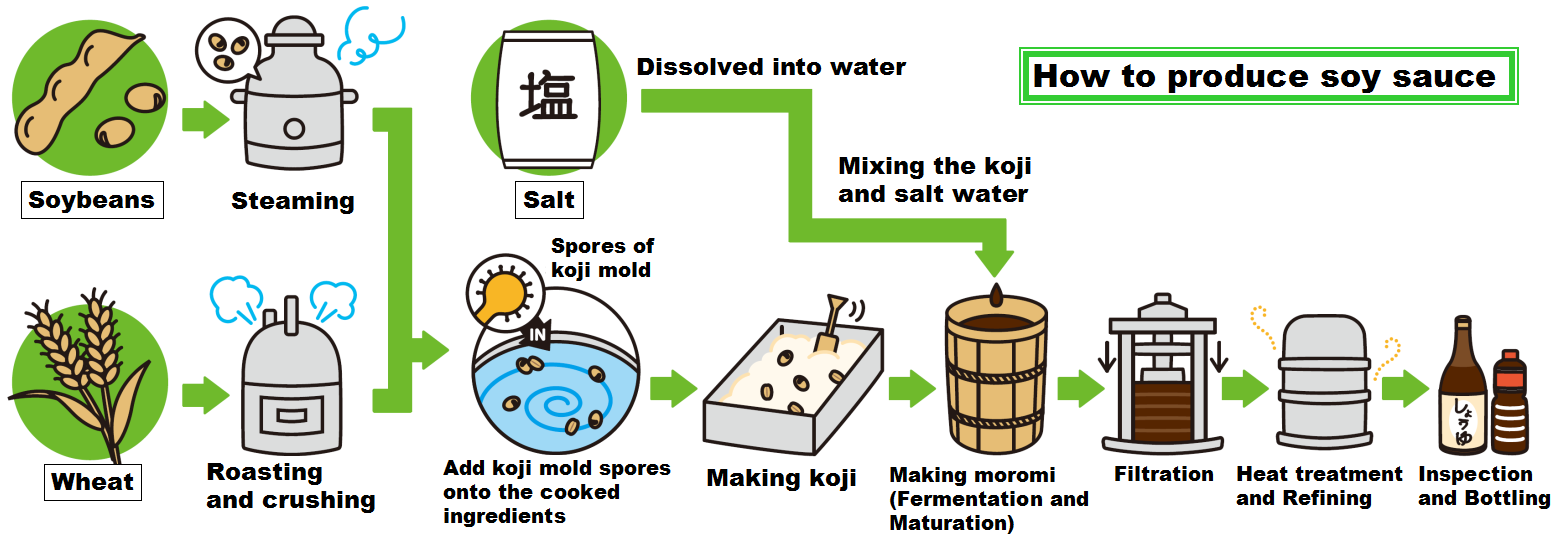The Role of Fermentation in Japanese Cuisine: Miso, Soy Sauce, and More

A Symphony of Flavors: The Role of Fermentation in Japanese Cuisine
Japanese cuisine is renowned for its intricate flavors, delicate textures, and emphasis on fresh ingredients. However, hidden beneath the surface is a powerful force that shapes the very soul of Japanese food: fermentation. This ancient technique transforms humble ingredients into complex, umami-rich treasures, playing a pivotal role in the diverse culinary landscape of Japan.
Miso: The Heart of Umami
Perhaps the most iconic fermented food in Japan is miso, a paste made from soybeans, salt, and koji (rice inoculated with Aspergillus oryzae). This versatile ingredient is the heart of countless Japanese dishes, from the comforting miso soup to the robust flavors of miso glazed vegetables and grilled fish. The fermentation process, lasting months to years, develops the signature umami, a savory taste that elevates any dish.
Soy Sauce: The Elixir of Life
Another cornerstone of Japanese cooking is soy sauce, a fermented concoction made from soybeans, wheat, salt, and koji. While often seen as a simple seasoning, soy sauce adds depth and complexity to a wide array of dishes, from stir-fries and ramen to marinades and glazes. The fermentation process, lasting for months or even years, transforms the raw ingredients into a liquid gold with a rich umami profile, enhancing the overall taste of any dish.
Beyond the Basics: A World of Fermented Delights
But the world of fermentation in Japanese cuisine extends far beyond miso and soy sauce. Pickles (tsukemono) are a staple, with diverse methods and ingredients, from the crunchy daikon and cucumber pickles to the delicate plum pickles. Natto, fermented soybeans, are a love-it-or-hate-it dish known for its sticky texture and pungent aroma. Sake, the beloved Japanese rice wine, also relies on fermentation for its unique flavor profile. Even the humble rice vinegar, commonly used in sushi and other dishes, undergoes fermentation to develop its tangy and complex notes.
The Benefits of Fermentation
Beyond the taste, fermentation brings numerous benefits to Japanese cuisine:
- Preservation: Traditionally, fermentation allowed for the preservation of food, particularly during colder months.
- Nutritional Enhancement: Fermentation breaks down complex carbohydrates, making nutrients more accessible and increasing bioavailability.
- Unique Flavor Profiles: The process creates complex and nuanced flavors that would be impossible to achieve through other cooking methods.
- Gut Health: Fermented foods are rich in probiotics, which are beneficial bacteria for gut health.
The Future of Fermentation
In recent years, there has been a renewed interest in traditional Japanese fermentation techniques. Chefs and home cooks alike are exploring new ways to utilize fermented ingredients, from incorporating miso and soy sauce into modern dishes to creating innovative fermented snacks and beverages. This ongoing evolution ensures that the age-old tradition of fermentation will continue to shape the culinary landscape of Japan for generations to come.
In conclusion, fermentation is more than just a culinary technique in Japan; it’s a philosophy of taste, preservation, and wellbeing. It’s the silent partner that enriches the Japanese table with an array of complex flavors, creating a symphony of taste that captivates the senses and nourishes the body. As we delve deeper into the world of fermented foods, we discover a treasure trove of culinary traditions that continue to inspire and delight.

